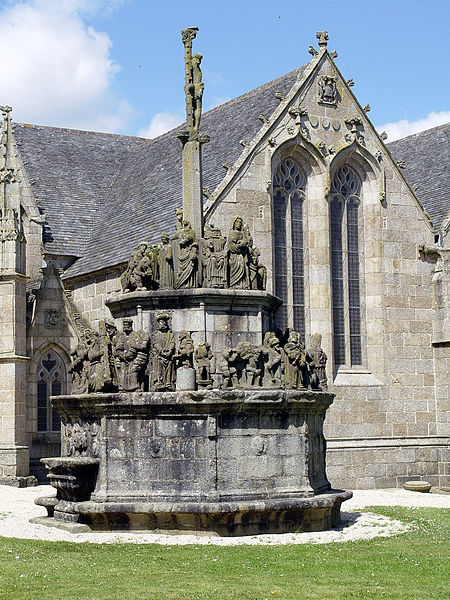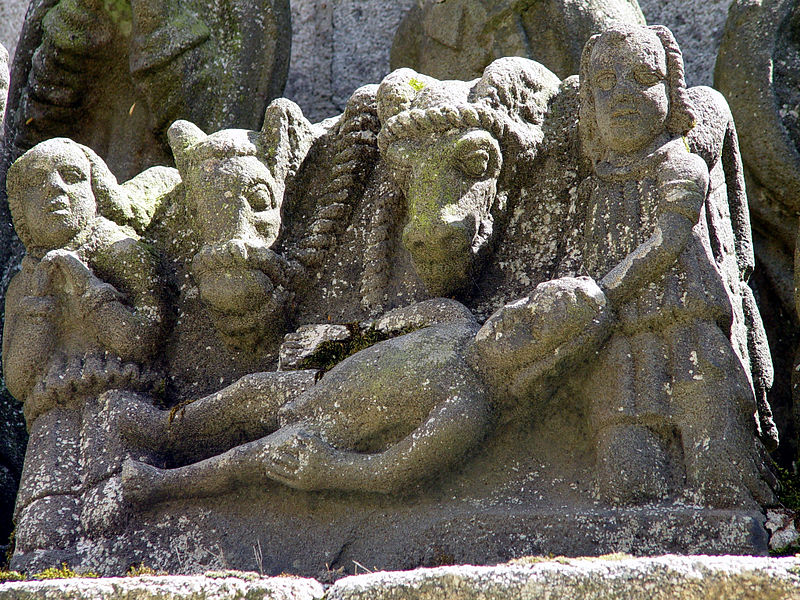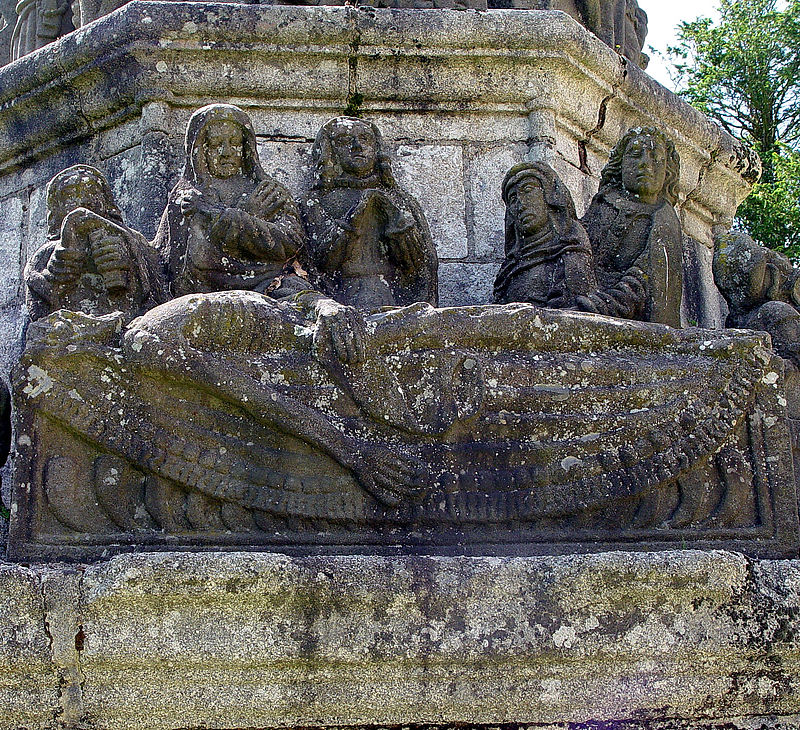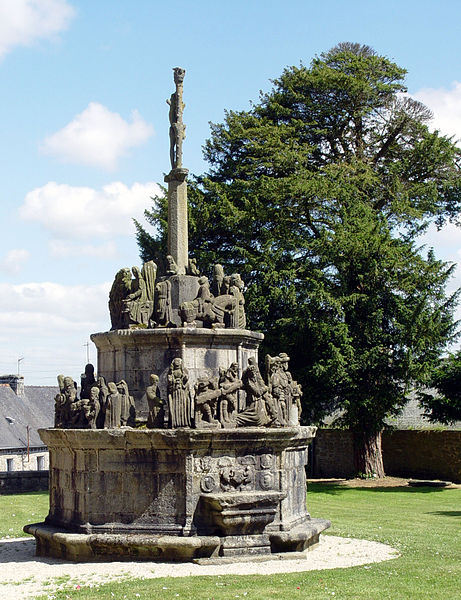Calvary at Kergrist-Moëlou, Kergrist-Moëlou

Facts and practical information
The Calvary at Kergrist-Moëlou in the Arrondissement of Guingamp in Brittany, France, dates back to 1578. It was the work of the sculptor Guillaume Jézéquel except for the crucifix which was the work of the sculptor Yves Hernot de Lannion and was remounted on the calvary in 1896. Kergrist-Moëlou is located in the Côtes-d'Armor region, the ancient diocese of Cornouaille. Jézéquel had worked alongside his brother on the Kergrist-Moëlou church in 1554. Originally the calvary's sculpture was substantial, with records showing that it was decorated with almost one hundred statues telling the story of the life and death of Jesus Christ, but sadly the calvary was vandalized during the 1793 French Revolution leaving many statues broken and decapitated with others disappearing completely. What is now left of the calvary stands on a large octagonal granite base and fragments of the mutilated figures are placed around the cross itself. This article gives some of the history of the calvary and describes its constituent parts. ()
Kergrist-Moëlou
Calvary at Kergrist-Moëlou – popular in the area (distance from the attraction)
Nearby attractions include: Intermarché, Église Saint-Grégoire, St. Peter's Church, St. Peter's Church.










